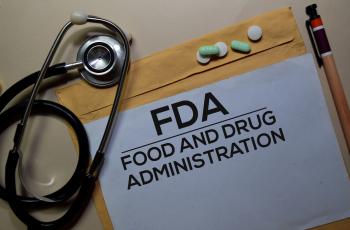ADA Recap: Reaching an International Consensus on Standardizing CGM Outcomes
In preparation for The diaTribe Foundation's July 21st gathering, Glycemic Outcomes Beyond A1c: Standardization and Implementation, we've provided an exclusive look at Close Concerns' coverage of the 2017 ADA Symposium, Reaching and International Consensus on Standardizing Continuous Glucose Monitoring Outcomes.
Our very own Ms. Kelly Close and Dr. Bruce Buckingham chaired a star-studded (and packed!) session on CGM outcomes standardization with Drs. Rich Bergenstal, Thomas Danne, George Grunberger, Anne Peters, Simon Heller, and Aaron Kowalski. We’ve never felt that a consensus on CGM outcomes has been so within reach! Dr. Rich Bergenstal led off with a number of statistics: There have been nine CGM outcomes consensus statements (six published, three pending) since 2013, comprised of 100 total CGM experts – he concluded that “we probably don’t need more consensus meetings, it’s time to align on a consensus.” And after representatives from a number of those committees presented their group’s work (Dr. Danne on the ATTD International Consensus Statement, Dr. Grunberger on the AACE/ACE Consensus Conference on CGM, Dr. Peters on the EASD and ADA Technology Working Group, Prof. Heller on the International Hypoglycaemia Study Group, and Dr. Kowalski on the T1D Outcomes Program), Dr. Buckingham concluded that “we’re pretty close to consensus, if we’re not there.” His final slide stole a line from the smash musical Hamilton, claiming “You were all in the room where it happened.” The excitement in the room was palpable, even though it was the last session of day one. We as an organization are over the moon. There has been so much discussion and so many stakeholders involved – it is amazing that we’ve come to a near-consensus on the time-in-range and variability thresholds to use for clinical trial reporting and beyond (see below).
- There are near-agreed upon core CGM metrics: (i) Level two hyperglycemia is >250 mg/dl; (ii) Level one hyperglycemia is >180 mg/dl; (iii) Time in target range is 70-180 mg/dl; (iv) level one (alert) hypoglycemia is <70 mg/dl; (v) level two hypoglycemia is <54 mg/dl; (vi) glycemic variability should be measured in the coefficient of variation and possibly standard deviation; (vii) Mean glucose and eA1c should be presented; (viii) AGP is the CGM visualization medium of choice; (ix) An episode of hypoglycemia or hyperglycemia is comprised of 15 minutes; (x) Sleep/wake time blocks are from 12pm-6pm and 6pm-12pm; (xi) data should be collected for a minimum of two weeks with 70-80% CGM wear to ensure sufficiency. Not all working groups settled on exactly these numbers or even addressed every question, but those who did tackle a problem settled on numbers and metrics that look very similar.
- The next step, of course, is to bring regulators and payers on board with the recommendations of 100 experts; the diaTribe Foundation, along with partners in the diabetes community, took a big step by organizing an FDA Workshop on Outcomes Beyond A1c last August and will hold another Consensus Conference entitled “Glycemic Outcomes Beyond A1c: Standardization & Implementation” in Bethesda, MD in the presence of CDER Director Dr. Janet Woodcock on July 21. This means so much to the whole diabetes community – standardization of data visualization and agreement on which outcomes matter, how to measure them, and what threshold should be used (in =
- Dr. Aaron Kowalski pointed out that the device side of FDA (CDRH) has largely adopted Outcomes Beyond A1c, but the drug side (CDER) hasn’t to the same degree. This is not a surprise to anyone who follows diabetes regulatory science; Drs. Courtney Lias and Stayce Beck have done an incredible job engaging patients and compromising to enable them to get beneficial technology quickly and with endpoints of relevance like time-in-range and hypoglycemia. This comes partly from the presence of a very active and vocal type 1 patient community in technology, which hasn’t been the case on the drug side. We are strong proponents for outcomes beyond A1c to be considered on the drug side as well, and we have every confidence this division will understand the value. We see no reason why CGM shouldn’t be included in every trial possible!
- Dr. Peters’ EASD/ADA Technology Working Group discussed five main themes in a manuscript, which is pending approval: (i) More systematic and structured pre-marketing evaluation of the performance of CGM systems; (ii) Greater investment in trials to provide evidence of CGM value and reliability for all patient groups; (iii) Standardization of CGM-measured glucose data reporting from clinical trials (see above); (iv) Improved consistency and accessibility of safety reports to regulatory authorities after market approval; and (v) Improved consistency and accessibility of safety reports to regulatory authorities after market approval. We’ll be keeping an eye out for this paper for sure!
-
Questions and Answers
Q: Everyone agrees that 70-180 mg/dl is the target range – should I tell my patients that as well?
A: Dr. Grunberger: The key is that every patient is an individual. For an individual, these are your targets, but it’s different for someone who’s pregnant or, say, nine years old. That range is quote-on-quote “normal” that you’ll see in healthy individuals. Advice for individual patients can differ.
Dr. Bergenstal: With hybrid closed loop, control is getting tighter and tighter overnight, and some people are considering going for 70-140 mg/dl overnight. This is a starting point.
Ms. Close: A lot of patients will have exactly this question. 140 mg/dl is also being measured, so we can individualize what patients see. Many people also have this concern, so thanks for bringing it up.
Q: Can you give specific guidance for individual products that have inherently different properties?
Dr. Danne: You’re really putting your finger in the wound. Obviously we try to be independent of manufacturing, industry, etc. And this is very much changing. A device calibrated twice per day today might be factory calibrated tomorrow, so it’s difficult to make recommendations on specific technology, but we try to give a grand scheme so that we can use CGM safely.
Courtesy of Close Concerns


